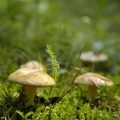Understanding Aphids: Identification and Lifecycle
Aphids are one of the most prevalent garden pests in the UK, causing widespread issues for both amateur gardeners and professional horticulturists. Recognising aphids early is essential to effectively managing their populations and minimising damage to plants. Typically, aphids are small, soft-bodied insects, ranging from 1 to 7 mm in length. They appear in a variety of colours including green, black, brown, yellow, and occasionally pink or white. Most commonly found species in UK gardens include the greenfly (Myzus persicae) and blackfly (Aphis fabae). Aphids cluster on the undersides of leaves, new shoots, and flower buds, feeding by piercing plant tissue and sucking out sap. This behaviour often leads to curled, yellowing leaves and stunted growth. Additionally, aphids excrete a sticky substance called honeydew, which can encourage the growth of sooty mould fungi.
The lifecycle of aphids is notably rapid and complex. Many aphid species reproduce asexually during the warmer months, with females giving birth to live nymphs that mature in just over a week. Under favourable conditions, this can result in several generations within a single season, leading to exponential population growth. As temperatures cool or food becomes scarce, some aphid species produce winged adults capable of migrating to new plants or overwintering hosts. In late summer or autumn, sexual reproduction occurs, resulting in eggs that survive through winter and hatch when spring arrives.
By understanding the appearance, habits, and lifecycle of aphids common to UK gardens, gardeners can better anticipate infestations and choose appropriate management strategies tailored to each stage of the pest’s development.
Assessing Damage: How Aphids Affect UK Garden Plants
Aphids are a widespread concern for gardeners across the UK, causing significant damage to a wide variety of plants. Recognising early signs of aphid infestations is crucial for effective management and prevention of lasting harm. This section outlines the typical symptoms associated with aphid attacks on ornamentals, vegetables, and fruit crops commonly found in British gardens.
Common Symptoms of Aphid Infestation
Aphids feed by piercing plant tissues and sucking out sap, which leads to several visible and physiological symptoms. Early detection can help limit their spread and the damage they cause. The following table summarises typical signs of aphid presence on different types of garden plants:
| Plant Type | Visible Symptoms | Impact on Plant Health |
|---|---|---|
| Ornamentals (e.g., roses, lupins) | Curling or distortion of leaves; sticky honeydew residue; presence of sooty mould; deformed buds and flowers | Reduced aesthetic value; stunted growth; increased susceptibility to secondary infections |
| Vegetables (e.g., beans, brassicas) | Yellowing leaves; wilting; poor pod or head formation; clusters of small green/black insects on stems and undersides of leaves | Lowered yields; compromised crop quality; weakened resistance to other pests and diseases |
| Fruit Crops (e.g., apples, plums, strawberries) | Puckered or curled foliage; honeydew attracting ants; premature leaf drop; distorted fruit development | Reduced fruit size and quality; risk of viral transmission; decreased harvests |
Secondary Effects and Risks
Apart from direct feeding damage, aphids also excrete honeydew, a sugary substance that encourages the growth of sooty mould. This black fungal layer not only reduces photosynthesis but also diminishes the overall appearance and health of affected plants. Additionally, aphids are vectors for several plant viruses prevalent in the UK, such as Potato Virus Y and Cucumber Mosaic Virus, which can further threaten both ornamental displays and edible crops.
Monitoring Strategies for UK Gardeners
Regular inspection is vital. Focus on new shoots, the underside of leaves, and growing tips where aphids congregate. Early intervention prevents infestations from escalating and minimises long-term impact on your garden’s vitality.

3. Preventative Strategies: Reducing Aphid Risk in the Garden
Effective aphid management in UK gardens begins with robust preventative measures tailored to local conditions and gardening traditions. Below, we outline essential cultural and horticultural practices that help minimise aphid infestations while supporting a healthy and sustainable garden environment.
Garden Hygiene: The Foundation of Prevention
Maintaining high standards of garden hygiene is crucial for reducing aphid populations. Remove fallen leaves, plant debris, and any diseased or infested plant material promptly, as these can harbour overwintering aphids and their eggs. Regularly cleaning pots, tools, and greenhouse surfaces also diminishes the likelihood of re-infestation. Encouraging tidiness not only limits pest habitat but also reduces the risk of secondary infections from viruses spread by aphids.
Crop Rotation: Disrupting Aphid Life Cycles
Practising crop rotation is a time-honoured strategy among UK gardeners, particularly within vegetable plots and allotments. By varying the location of related plant families each year, you interrupt the life cycles of aphids that specialise in specific crops. For example, avoid planting brassicas in the same spot season after season to deter cabbage aphids. This approach not only suppresses pest build-up but also improves soil health and overall yield.
Thoughtful Plant Selection: Building Natural Resistance
Selecting plants that are well-suited to your local climate and less susceptible to aphid attack can make a significant difference. Opt for robust native species or cultivars bred for resistance to common pests. Incorporate companion planting by growing aromatic herbs like chives, mint, or marigolds among vulnerable crops; these plants naturally repel aphids through their scent or by attracting beneficial insects such as ladybirds and lacewings.
Additional Cultural Practices
Regular monitoring is essential—inspect plants frequently for early signs of aphid presence, especially during mild springs and summers typical in much of the UK. Avoid excessive use of nitrogen-rich fertilisers, as lush new growth often attracts aphids. Instead, promote balanced nutrition using well-rotted compost or organic feeds. Finally, encourage biodiversity by providing habitats for natural predators within your garden landscape.
Conclusion
By integrating these preventative strategies into your routine gardening practice, you create an environment less hospitable to aphids while supporting long-term plant health. Combining cultural wisdom with practical action ensures that UK gardens remain vibrant and resilient against common pests like aphids.
4. Natural Remedies and Biological Controls
In the quest to manage aphid populations in UK gardens while minimising environmental impact, many gardeners are turning to natural remedies and biological controls. These strategies not only reduce reliance on chemical pesticides but also support local biodiversity and long-term garden health.
Encouraging Beneficial Insects
One of the most effective methods is to attract and support natural predators of aphids. Ladybirds (ladybugs), lacewings, and hoverflies are particularly valued in British gardens for their appetite for aphids. By planting a diverse range of flowering plants such as dill, fennel, marigolds, and yarrow, you can create an inviting habitat for these helpful insects. Additionally, leaving some areas of your garden slightly wild provides shelter and breeding grounds for beneficial wildlife.
Homemade Sprays
For those seeking immediate intervention, several homemade sprays offer a quick and eco-friendly solution. A simple soap spray—made by mixing a few drops of mild liquid soap with water—can be sprayed directly onto affected plants to suffocate aphids without harming beneficial insects when used sparingly. Another popular remedy involves garlic or chilli infusions, which deter aphids through strong odours.
Popular Homemade Spray Recipes in the UK
| Spray Type | Ingredients | Application Method |
|---|---|---|
| Soap Spray | 1 tsp mild liquid soap 1 litre water |
Spray directly on aphids; repeat weekly if necessary |
| Garlic Spray | 2 crushed garlic cloves 1 litre water Strain before use |
Mist over affected plants; avoid use in strong sunlight |
| Chilli Spray | 1-2 chillies blended 1 litre water Strain before use |
Spray on infested areas; use gloves when handling |
Companion Planting Strategies
Companion planting remains a time-honoured practice among UK gardeners. Certain plant combinations can naturally deter aphids or draw them away from more vulnerable crops. For example, planting nasturtiums as a sacrificial crop attracts aphids away from brassicas, while herbs like chives and mint release aromatic compounds that repel unwanted pests.
Common Companion Plants for Aphid Management in the UK
| Main Crop | Companion Plant | Benefit |
|---|---|---|
| Cabbage & Broccoli | Nasturtium | Lures aphids away from main crop |
| Roses & Beans | Garlic & Chives | Aromatic deterrent for aphids |
| Lettuce & Tomatoes | Marigold | Attracts predatory insects; repels aphids and whitefly |
Sustainable Outcomes for UK Gardens
The adoption of natural remedies and biological controls offers sustainable, low-impact solutions tailored to the unique conditions of UK gardens. Through careful planning and encouragement of local wildlife, gardeners can effectively manage aphid populations while nurturing a healthier, more resilient outdoor space.
5. Chemical Control: Safe Pesticide Use in British Gardens
Chemical solutions can be an effective last resort for controlling aphid infestations when other methods prove insufficient. However, responsible and regulated use is essential to safeguard pollinators, pets, children, and the wider UK environment. Below are key considerations for safe pesticide application in British gardens.
Understanding Approved Insecticides
Only use pesticides that are approved for home and garden use by the Health and Safety Executive (HSE) and are labelled as suitable for aphid control. Popular active ingredients available in the UK include fatty acids, plant oils, pyrethrins, and synthetic pyrethroids. Always check product labels for specific usage instructions, target pests, and safety precautions.
Application Timing and Methods
Apply insecticides in the early morning or late evening when pollinators such as bees are less active. Avoid spraying during windy conditions to prevent drift onto non-target plants or water sources. Spot-treat affected plants rather than blanket-spraying the entire garden to minimise environmental impact.
Protecting Pollinators and Beneficial Insects
Choose selective products that pose minimal risk to bees, ladybirds, and other beneficial insects. For example, opt for contact-only sprays rather than systemic insecticides where possible. Remove any open flowers from treated plants before application to further protect pollinators.
Regulatory Compliance and Disposal
Follow all manufacturer’s instructions regarding dosage, dilution, and personal protective equipment (PPE). Store pesticides securely out of reach of children and pets. Dispose of unused chemicals and empty containers responsibly at designated local authority recycling centres—never pour leftover chemicals down drains or onto soil.
Integrated Pest Management Approach
Chemical controls should form part of an integrated pest management (IPM) strategy alongside cultural, mechanical, and biological methods. This balanced approach reduces the risk of pesticide resistance developing in aphid populations while preserving overall garden health and biodiversity.
6. Monitoring and Ongoing Management
Effective aphid control in UK gardens requires not only initial intervention but also consistent monitoring and adaptive management throughout the growing season. British weather is famously changeable, with mild springs, wet summers, and unexpected temperature fluctuations—factors that can all influence aphid activity and population growth.
Establishing a Regular Inspection Routine
To keep aphids at bay, develop a habit of inspecting your plants at least once a week during peak growing periods. Focus on the undersides of leaves, new shoots, and tender stems, as these are common hiding spots for aphids. Early detection allows for prompt action before infestations become severe.
Key Points for Effective Monitoring
- Check susceptible plants (such as roses, broad beans, and brassicas) more frequently.
- Pay special attention after periods of warm, dry weather, which can accelerate aphid reproduction.
- Look out for signs such as distorted foliage, sticky honeydew residue, and the presence of ants—an indicator that aphids are nearby.
Adapting Strategies to Weather Conditions
The British climate demands flexibility in pest management. After heavy rainfall, natural predators may return in greater numbers, and some aphids may be washed away, reducing the immediate need for intervention. Conversely, prolonged dry spells may necessitate increased vigilance and quicker response to outbreaks.
Responding to Seasonal Changes
- In early spring, focus on prevention and physical removal to disrupt overwintering colonies.
- During summer peaks, increase use of natural predators or organic sprays as needed.
- Towards autumn, reduce chemical interventions to protect beneficial insects preparing for winter.
Recording Observations and Adjusting Approaches
Maintain a simple garden log or journal to track when and where aphid issues arise and what solutions prove most effective. This data-driven approach helps refine your management plan year by year, ensuring you stay one step ahead regardless of how the British weather unfolds.


